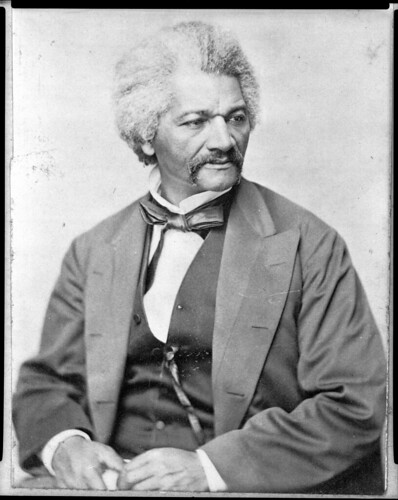Celebrated abolitionist commemorated by local artist, national newspaper columnist
Frederick Douglass, who has been called the greatest American of the 19th century, grew up as a slave named Frederick Bailey. He became a prominent American abolitionist, author and orator.
He made several appearances in Syracuse during his lifetime (1818-95). On Nov. 14, 1861, he gave a speech, “The Rebellion: Its Cause and Remedy,” before several hundred people. He advocated for the emancipation of slaves, their role as soldiers and ways in which the Civil War could be ended.

“In order to have a Union,” Douglass said that day in Syracuse, “we must have unity of idea, unity of purpose, unity of interest.”
Then the next day, on Friday, Nov. 15, he gave a speech on literature, which was a key theme in his life. He was the publisher of a Rochester-based, anti-slavery newspaper, “The North Star.” The paper’s motto was, “Right is of no Sex—Truth is of no Color—God is the Father of us all, and we are all Brethren.”
The newspaper will be revived online by activist and columnist for The Intercept Shaun King, who made the announcement Nov. 1. King said in a NPR interview his team will bring the paper into the digital age by publishing online. The revived paper will also provide its audience with podcasts, video news services and mobile apps.
While the paper is among Douglass’ ties to New York state, he made other visits to Syracuse.
In 1843 at Fayette Park, he was chatting with some locals near a tree. Within hours, he had about 500 people there listening to his ideas.
On Aug. 20, 1850, Douglass gave a lecture on slavery at Syracuse City Hall.
His other appearances focused on justice and human rights. In 1851, Douglass announced at a meeting in Syracuse that he did not assume the Constitution was a pro-slavery document. He said it could “be wielded in behalf of emancipation,” especially where the federal government had exclusive jurisdiction.
This summer, Syracuse honored his legacy: A bridge over South Salina Street became a mural of Martin Luther King Jr. and Douglass, who is painted on one side of the wall.
— Article by Matthew Gutierrez, Staff Reporter
 The Stand
The Stand

